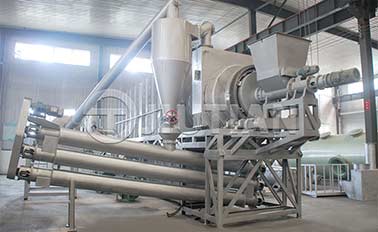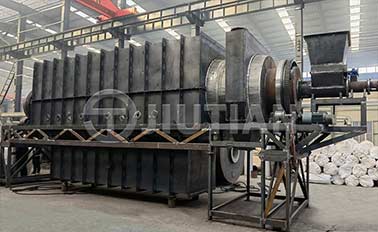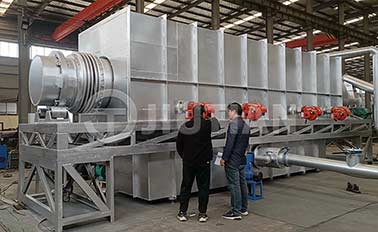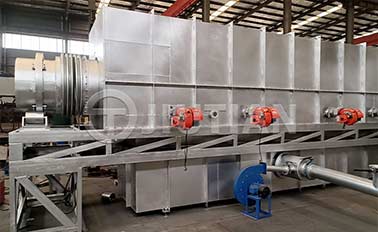Peanut shells are used as agricultural by-products and are often thrown away as waste. In fact, peanut shells are a very good resource. As long as they are used properly, they can not only regenerate the resource to make carbon, but also further prepare activated carbon. Jiutian Mechanical Peanut Shell Carbonization Furnace processes peanut shells and other agricultural by-products, uses their calorific value characteristics for high-temperature carbonization, and produces high-quality biochar.
Drying stage of peanut shells: At this time, the temperature in the carbonization furnace is relatively low, generally between 50-150°C. The thermal decomposition rate of peanut shells is very slow at this stage, and it mainly relies on the heat provided by the outside world to evaporate the water contained in the peanut shells.

Peanut shell pre-carbonization stage: At this stage, the temperature in the carbonization furnace is 50-270°C. The thermal decomposition reaction of peanut shells is obvious, the chemical composition begins to change, and hemicellulose decomposes to generate carbon monoxide, carbon dioxide, acetic acid and other substances.
Peanut shell carbonization stage: The temperature in the carbonization furnace at this stage is 70-400°C. The peanut shells undergo rapid thermal decomposition, producing a large amount of liquid products (acetic acid, methanol, tar) and gaseous products. At this stage, the carbon dioxide in the furnace gradually decreases, while flammable gases such as methane and ethylene continue to increase.
Peanut shell calcination stage: the temperature in the furnace rises to above 500°C. At this stage, the remaining volatile substances in the biochar are discharged to increase the fixed carbon content of the biochar.
The peanut shell carbonization furnace converts waste agricultural by-products into high-quality biochar through multiple processes. Compared with traditional processes, the production process of this equipment has the advantages of low energy consumption, high efficiency, and environmental protection. Biochar can be further processed to obtain a new waste utilization model of activated carbon, which provides new concepts and directions for the treatment of biomass resources.

Location:Indonesia
Project Progress:Put Into Production

Location:Vietnam
Project Progress:Put Into Production

Location:Kenya
Project Progress:Put Into Production

Location:Canada
Project Progress:Put Into Production